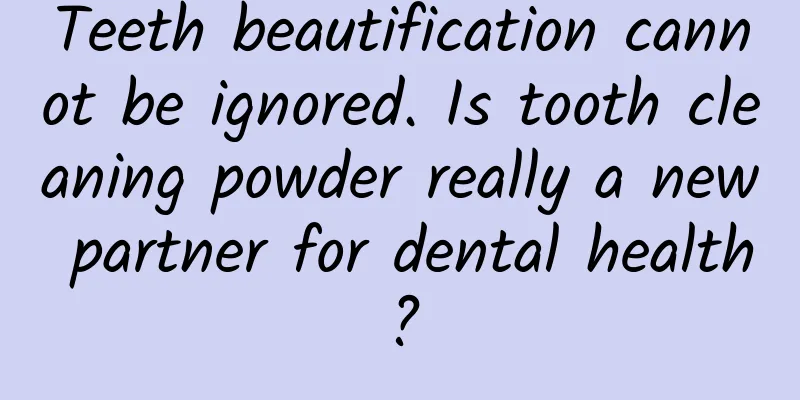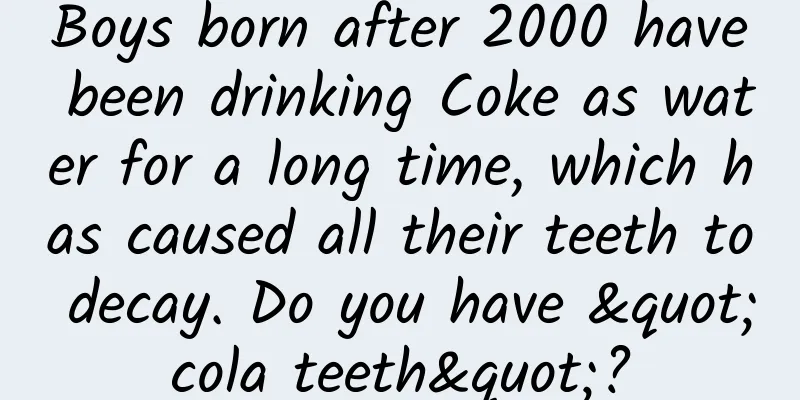Teeth beautification cannot be ignored. Is tooth cleaning powder really a new partner for dental health?

|
As people pay more and more attention to health issues, oral health has become a part that cannot be ignored. Dental care and beautification have become a concern for many consumers in their daily lives. Many teeth whitening products have emerged, and tooth cleaning powder is one of them. However, some consumers question whether this product is really safe and effective? "Tooth washing powder" is just a common name. If you search for tooth washing powder on the Internet, you will find that the names of various products approved for use on the market only have the word "tooth washing powder" instead of the complete three words "tooth washing powder", and most of them use whitening, brightening, enzyme, etc. as words to indicate their efficacy. What is tooth powder? Before the emergence of toothpaste, tooth powder was the most commonly used teeth cleaner. An online article said that the main difference between toothpaste and tooth powder is the form, one is powder and the other is paste. The main active ingredients are basically the same, but in fact they are very different, especially with the development of modern fine chemicals. The safety and functionality of toothpaste are far beyond the reach of tooth powder. The primary function of toothpaste is safety and cleaning effect. It can clean the plaque on the surface of teeth without damaging the enamel and dentin. In order to achieve this balance between safety and cleaning effect, high-end toothpaste generally uses silica particles instead of calcium carbonate with too much friction ability. The latter has a large friction force and will damage the enamel, making the tooth surface rougher. A closer look at the formula of commercially available tooth powders reveals that they all have an auxiliary ingredient: calcium carbonate. Tooth powders that use calcium carbonate, which has high friction and high abrasiveness, are definitely better at cleaning than toothpaste, but the damage to tooth enamel cannot be underestimated. Tooth enamel is non-renewable, and excessive use of tooth powder is like drinking poison to quench thirst, which will make the tooth surface rougher and more easily stained by smoke, tea, coffee, etc. Removing pigment deposition through friction is a double-edged sword. Many toothpastes with whitening effects also contain calcium carbonate, which can also damage tooth enamel. Therefore, whether it is tooth powder or whitening toothpaste, they are all physical whitening and cannot be used for a long time. In addition, in order to achieve whitening effect, "whitening factors" with different names are added to tooth powder and toothpaste. Compared with toothpaste, there are no clear ingredients in the formula of tooth powder. These whitening factors are chemical whitening methods and do have the effect of "bleaching" teeth. However, while bleaching, they will increase the sensitivity of teeth to cold, hot and acid, and different people have different sensitivities. Some people will feel toothache or even be unable to bite food normally after using it, so it depends on the person. Now, with the upgrading of products, active substances including natural antibacterial polyphenols, vitamin D, chlorophyll, anti-caries fluoride, etc. are also widely used in toothwash powder products. These functions are actually only auxiliary, but the selling price of the product has increased accordingly, and the public can choose according to their own budget. When it comes to the prevention and treatment of tooth pigmentation, the key is prevention. People with rough tooth enamel need to develop good living habits and restrain themselves from smoking, drinking strong tea and coffee. As the saying goes, "there is no need for treatment if there is no pollution." In addition, it is not advisable to simply use tooth powder or toothpaste to remove tartar. As a hard deposit, simply using physical friction to remove tartar will definitely be "killing one thousand enemies and losing eight hundred of your own", which will cause greater damage to the tooth enamel. The correct way is to go to a regular dental department and use ultrasonic crushing to break up and remove the tartar. This article was scientifically reviewed by Ding Qingming, deputy director of the Department of Pharmacy at Peking University People's Hospital. |
<<: Statista: Japanese readers spent an average of $86.5 on e-books in 2015
>>: Apple is vulnerable: Windows 10 market share in Russia exceeds MAC in seven days
Recommend
TCT is problematic but biopsy is inflammation
With the development of medical technology, peopl...
Why is Brazilian agate so cheap (the output is very large and there is no shortage in the market)
...
【Medical Q&A】What is the glycemic index? How does it affect your blood sugar levels?
Planner: Chinese Medical Association Reviewer: Ji...
What is the reason for the drying of Phalaenopsis buds? How to solve the drying of Phalaenopsis buds?
With the improvement of living standards, more an...
Should girls wear underwear when sleeping at night?
Whether girls should wear underwear when sleeping...
What foods should not be eaten during menstruation
Many girls sigh before their period comes because...
Benefits of drinking corn porridge for pregnant women
Speaking of porridge, it is actually a food with ...
How to treat women's sweating
For women, sweating seems to be a very common thi...
Can vaginal ultrasound detect pregnancy?
Women who have had sex may be pregnant. We know t...
[Health Science] Do a good job of breast screening and protect breast health
1. Why do we need breast cancer screening? Breast...
If a pregnant woman does not gain weight, is the fetus fully developed and ready to be born? When is the fetus usually born?
We all know that after a woman becomes pregnant, ...
What are the black spots on strawberries? When is the strawberry season?
Strawberries are not only rich in nutritional val...
What is the cause of vulvar pain during intercourse?
Some couples experience pain during sexual interc...
What should I do if my episiotomy wound ruptures?
Every mother is very excited and happy after givi...









